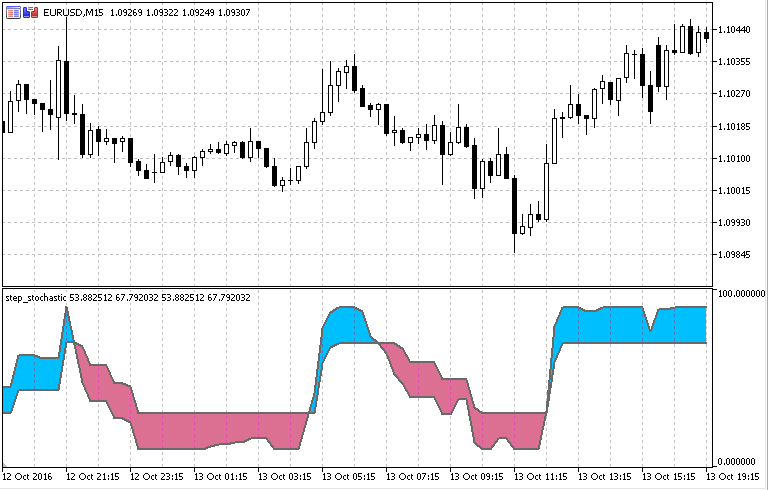Rejoignez notre page de fans
- Vues:
- 12477
- Note:
- Publié:
- 2016.10.28 17:15
- Mise à jour:
- 2017.01.16 09:12
-
Besoin d'un robot ou d'un indicateur basé sur ce code ? Commandez-le sur Freelance Aller sur Freelance
Since I first saw it, I have always liked the idea of a step stochastic. But every single version I have seen had two very serious flaws:
minimum and maximum
average true range are inherited from a previous bar
and thus it makes
it depend on the number of bars used in calculations. The rest of the calculations depends on that "inherited" value, and,
since with time the minimum and the maximum are just getting bigger
(maximum) and smaller (minimum), the "step quality" of the step
stochastic is simply lost when big enough number of bars pass. So the
step stochastic becomes deformed and is not a "step" stochastic any more
on newest bars.
This one solves those issues. The idea is simple — instead of inheriting previous state of ATR minimum and maximums, the minimum and maximum are cheсked in a "Window" number of past bars. That way it is not deformed and is reacting to latest data fairly good. Compared to the "old" ones you will notice that at the beginning they have the same values (since the "old" still did not "deform") but as time passes the differences grow bigger and bigger. That is the effect of not inheriting and in the end of not repainting.
>
 Relative Volatility Index
Relative Volatility Index
Indicator is already multi time frame version with alerts included.
 T3_Double Bands
T3_Double Bands
Three T3s calculated: of high (upper line), close (middle line) and low (lower line).
 DT Oscillator
DT Oscillator
It is a DT oscillator as described by Robert Miner with some additional features.
 Averages MTF
Averages MTF
A version that adds some averages not supported by built in standard types to the collection of averages in one single file.